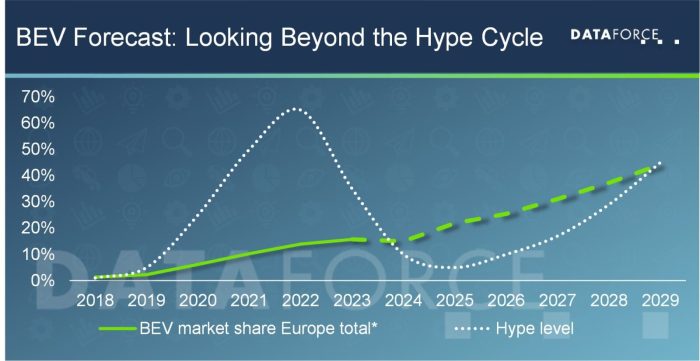The automotive market is a dynamic and complex landscape, constantly evolving due to technological advancements, economic fluctuations, and shifting consumer preferences. Predicting the future with certainty is impossible, but by analyzing current trends and market data, we can formulate a reasonable outlook and price forecast for the car market in 2025. This analysis will consider various factors, including supply chain issues, the rise of electric vehicles (EVs), the impact of inflation, and evolving consumer buying habits.
Global Automotive Market Trends Shaping 2025
The Rise of Electric Vehicles (EVs) and Alternative Fuels
The transition to electric vehicles is arguably the most significant trend reshaping the automotive landscape. Government regulations aimed at reducing carbon emissions, coupled with increasing consumer demand for eco-friendly transportation, are accelerating EV adoption globally. This shift is impacting not only the demand for gasoline-powered vehicles but also the entire automotive supply chain, requiring manufacturers to invest heavily in battery technology, charging infrastructure, and related technologies.
The price of EVs is expected to continue falling, making them more accessible to a wider range of consumers. However, challenges remain, including the availability of raw materials for battery production and the expansion of charging infrastructure, particularly in developing countries. Alternative fuel vehicles, such as hybrid electric vehicles (HEVs) and fuel cell electric vehicles (FCEVs), also play a significant role in this transition, offering a more gradual shift away from traditional gasoline-powered cars.

Source: dataforce.de
Supply Chain Disruptions and Semiconductor Shortages
The automotive industry has been significantly impacted by global supply chain disruptions, particularly the semiconductor shortage that began in 2020. These shortages have led to production delays, increased vehicle prices, and extended waiting times for consumers. While the situation has improved somewhat, the automotive industry remains vulnerable to future supply chain disruptions, highlighting the need for greater diversification and resilience in sourcing critical components.
This ongoing volatility is a key factor influencing the price forecast for 2025.

Source: tempuslogix.com
Inflation and Economic Uncertainty
Global inflation and economic uncertainty are major factors influencing consumer spending and automotive demand. Rising interest rates and increased borrowing costs can reduce consumer purchasing power, impacting demand for new vehicles. This economic climate is likely to affect the pricing strategies of manufacturers, who may need to adjust prices to reflect changing market conditions and maintain profitability. The impact of inflation on the cost of raw materials and manufacturing also plays a significant role in determining the final price of vehicles.
Changing Consumer Preferences and Buying Habits
Consumer preferences are evolving rapidly. Younger generations are increasingly prioritizing sustainability, technology, and connectivity in their vehicle choices. This shift is driving demand for EVs, vehicles with advanced driver-assistance systems (ADAS), and vehicles with seamless integration of infotainment systems. The rise of subscription services and shared mobility options is also changing how consumers access and utilize vehicles, potentially impacting the demand for personal car ownership.
Car Price Forecast for 2025
Predicting precise car prices for 2025 is challenging due to the numerous interacting factors mentioned above. However, based on current trends, we can offer some general observations:
Expected Price Increases for Certain Vehicle Types
Given the ongoing supply chain challenges, inflation, and increasing demand for EVs and vehicles with advanced features, we can anticipate price increases for many vehicle types in 2025. This is particularly true for high-demand vehicles, such as popular electric SUVs and luxury cars. The magnitude of these price increases will depend on several factors, including specific market conditions and the success of manufacturers in mitigating supply chain disruptions.
Potential Price Stability or Slight Decreases for Other Segments
In contrast, certain market segments might experience price stability or even slight decreases. This could include some gasoline-powered vehicles with lower demand or vehicles where manufacturers are able to effectively manage their supply chains and reduce production costs. Competition within the market will also play a role in determining price points.
Used Car Market Outlook
The used car market is expected to remain dynamic in 2025. Factors such as the continued shortage of new vehicles and the increasing popularity of leasing could influence the pricing and availability of used cars. Competition in the used car market is likely to remain intense, with prices potentially fluctuating depending on demand and the overall economic climate.

Source: carcoachreports.com
Factors Affecting the Automotive Market Outlook
- Government Regulations: Stringent emission standards and incentives for EV adoption will continue to shape the market.
- Technological Advancements: Innovations in battery technology, autonomous driving, and connectivity will influence consumer preferences and vehicle prices.
- Geopolitical Events: Global events and conflicts can disrupt supply chains and impact the availability of raw materials.
- Economic Conditions: Recessions or economic booms can significantly influence consumer spending on vehicles.
Frequently Asked Questions (FAQs)
- Q: Will electric cars become cheaper in 2025? A: While the trend is towards decreasing EV prices, the rate of decline will depend on several factors, including battery costs and government subsidies. Some models may see price reductions, while others may remain relatively expensive.
- Q: Will the chip shortage continue to affect car prices in 2025? A: The severity of the chip shortage is expected to lessen, but it’s unlikely to completely disappear. Residual effects could still impact production and prices to some extent.
- Q: What types of cars will be most in demand in 2025? A: Electric SUVs and vehicles with advanced technology features are likely to remain highly sought after. However, consumer preferences can change rapidly, so this is not a definitive prediction.
- Q: How will inflation affect car prices in 2025? A: Inflation will likely lead to higher car prices due to increased costs of raw materials and manufacturing. The extent of this impact will depend on the overall inflation rate.
Sources
Call to Action
Stay informed about the latest automotive market trends and forecasts by subscribing to our newsletter or following us on social media. Understanding these trends can help you make informed decisions when purchasing or investing in the automotive sector.
Commonly Asked Questions
What are the major technological advancements expected to impact car prices in 2025?
Advancements in electric vehicle technology, autonomous driving systems, and connected car features are expected to significantly influence car prices, with some technologies increasing costs while others may eventually lead to price reductions.
How will global economic conditions affect the car market in 2025?
Global economic factors such as inflation, recessionary pressures, and supply chain disruptions will directly impact production costs, consumer purchasing power, and overall market demand.
Which geographical regions are projected to experience the most significant growth in the automotive market by 2025?
Emerging markets in Asia and certain regions of Africa are anticipated to exhibit substantial growth, driven by rising disposable incomes and increasing vehicle ownership rates. However, this growth will also depend on infrastructure development and economic stability.
